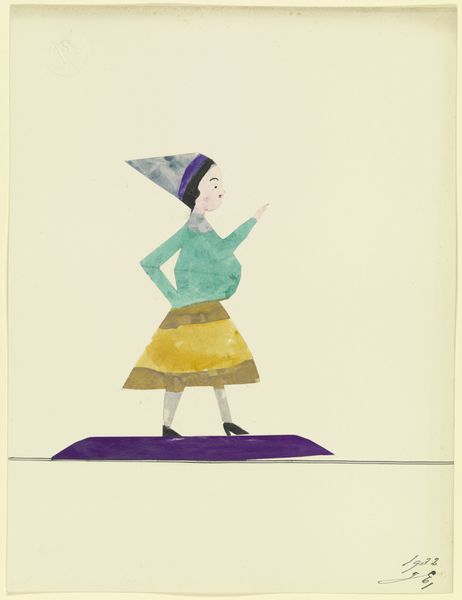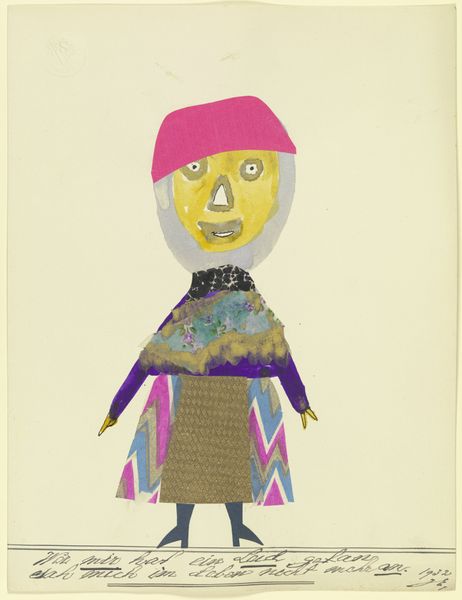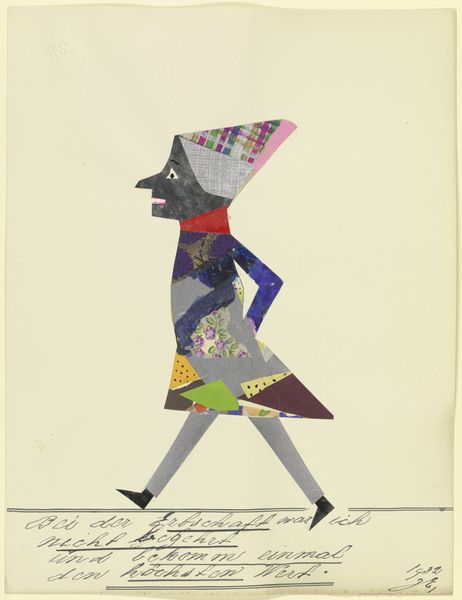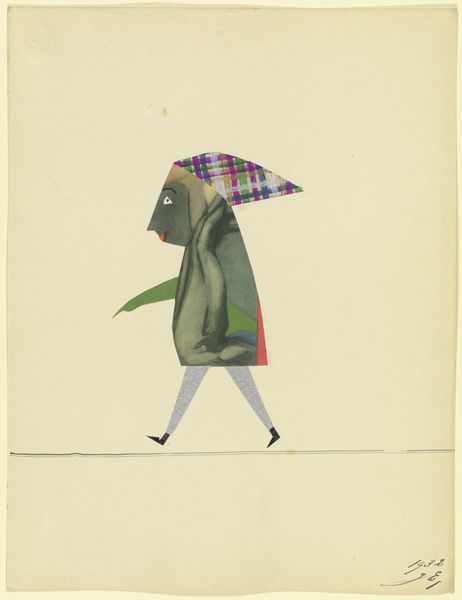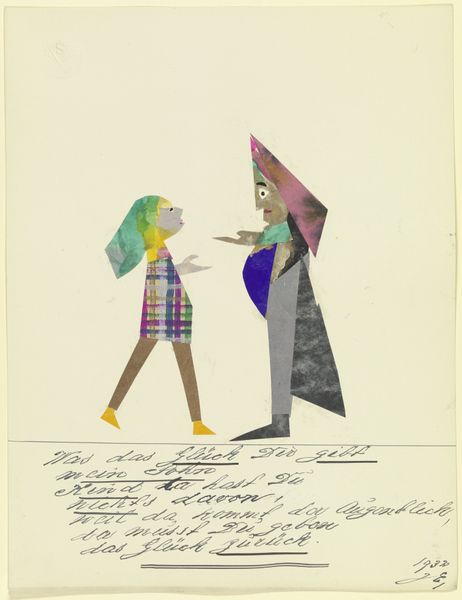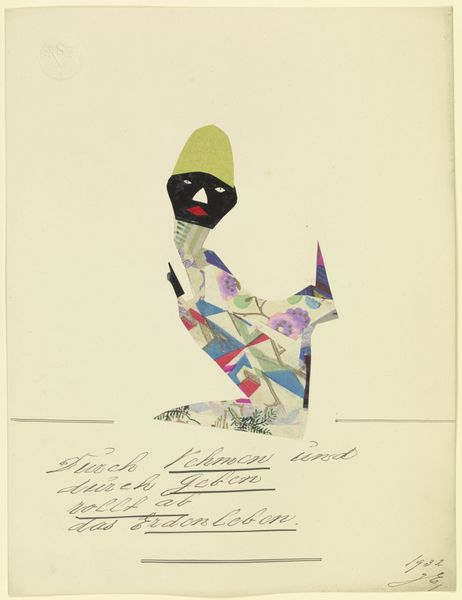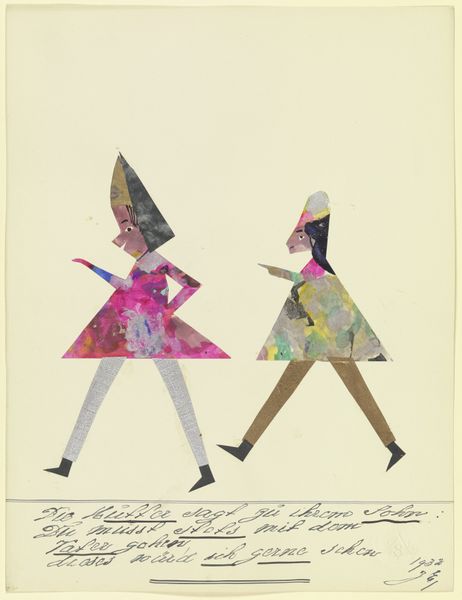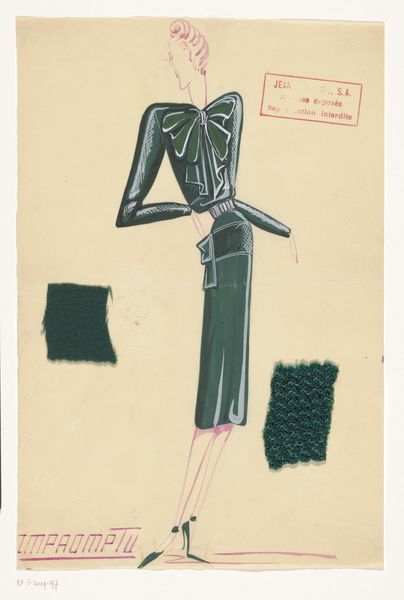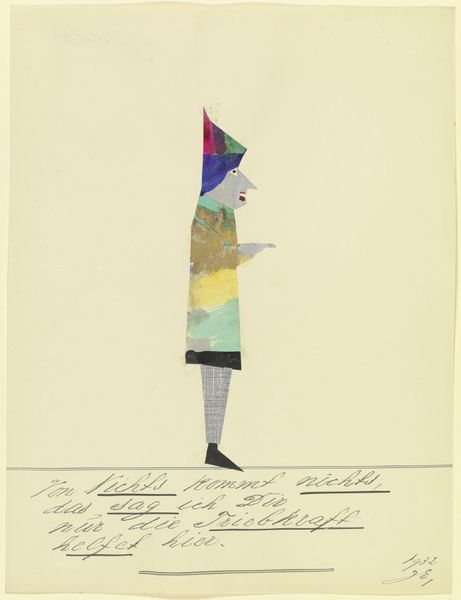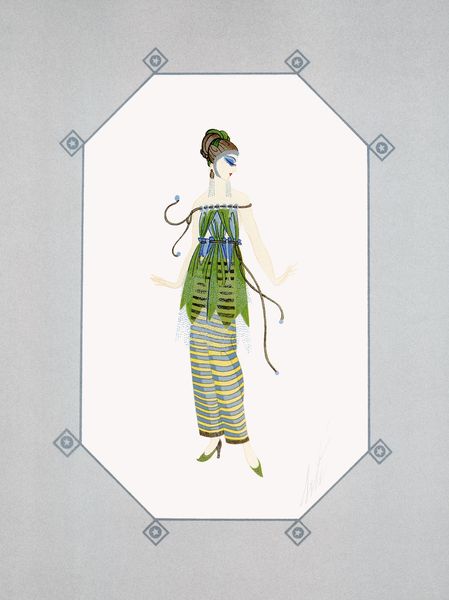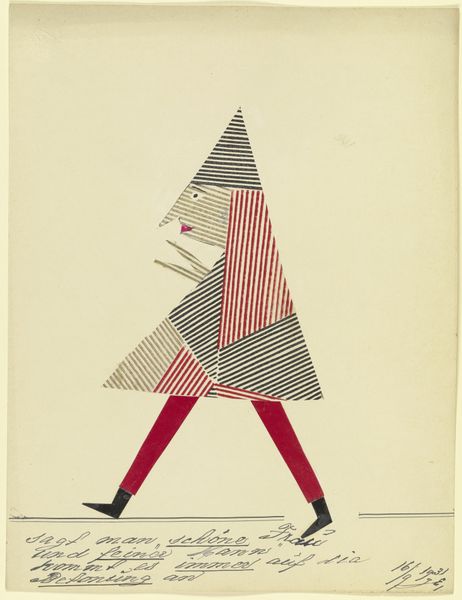
Copyright: Public Domain
Curator: Looking at "17924," created by John Elsas around 1932 and currently held at the Städel Museum, I’m struck by its playful geometry. What do you think? Editor: The immediate feeling is unsettling. There’s a strange disharmony, an awkward balance that captivates me despite the disjointedness. It is as if all of these distinct shapes work as an alphabet. Curator: It is the collage element. Elsas constructs this figure through an assemblage of diverse papers, gouache, and ink. You see the contrast in the smooth paper versus the textured or patterned pieces. Consider what materials were available to Elsas in 1932. How might this collection of discarded papers hint at wider trends? Editor: Fascinating point. Formally, the abrupt changes in color and texture disrupt any sense of realistic space, though the use of the horizon line hints at the intent of figure-ground relationship, but I read it more as pure composition than an attempt at straightforward figuration. Curator: His employment of materials challenges the traditional role and process involved in artistic output. Here is a move away from the accepted understanding, toward the value and expression, even if unintentional, inherent in these everyday materials and his means of putting them together. It feels expressive. Editor: The flat planes and juxtaposed colors are so redolent of German Expressionism. The angular features, for example, of the figure’s face. He almost deconstructs portraiture to its core elements—color, shape, and line. Do you get the same sense of psychological intensity typically linked to that movement given that the materials speak to consumption and accessibility, not only intentional self-expression? Curator: I think that the sense of isolation of abstraction amplifies that psychological tension. The raw, seemingly ad-hoc, nature of the materials creates that feeling as much as any overtly expressionistic brushstroke might. Editor: Perhaps you're right, it is a successful subversion then. By embracing everyday materiality he achieves an emotional impact of pure geometrical abstraction that could otherwise fall short of expressive engagement. Curator: Agreed. It shows how careful examination of technique and even found objects informs art just as much as the grand themes do. Editor: Indeed. It gives us an idea that the artist created these characters because he or she found something with the forms, instead of applying a preconceived idea. It's a striking exploration of artistic boundaries and methods.
Comments
No comments
Be the first to comment and join the conversation on the ultimate creative platform.
